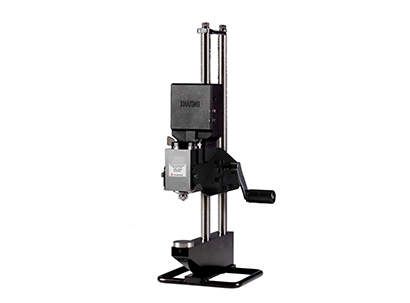
In the realm of material testing, the Brinell Hardness Tester stands as a titan, offering invaluable insights into the hardness of materials. This specialized instrument is designed to quantify the resistance of a material to deformation, primarily focusing on metals and alloys. Whether you're in the manufacturing industry, research and development, or quality control, understanding how the Brinell Hardness Tester operates can significantly impact your work's outcome.
At the core of the Brinell hardness testing method lies a simple yet profound principle. The test involves pressing a hard metal indenter, typically made of tungsten carbide, into the surface of the material being tested with a predetermined force. The diameter of the indentation left on the material's surface is then measured, with the Brinell hardness number (BHN) calculated from the force applied and the indentation's surface area.
This methodology allows for a direct and reliable measurement of the material's hardness, which is crucial for applications where durability and wear resistance are of paramount importance. It is particularly favored for testing materials with a coarse or uneven grain structure, such as cast iron, where other hardness tests might not provide accurate results.
One might wonder why the Brinell hardness test remains popular amidst a plethora of material testing methods. The answer lies in its unique set of advantages, which include:
1. Versatility: The Brinell hardness test can be applied to almost all metals, ranging from the softest to the hardest, making it incredibly versatile.
2. Non-destructive: Though the test does leave an indentation, the overall integrity of the material is not compromised, allowing for further testing or use.
3. Accuracy and Reproducibility: The test is highly accurate, and its results are easily reproducible, given the standardized testing procedure followed.
The Brinell Hardness Tester finds its application across a diverse range of industries. In manufacturing, it is essential for assessing the quality and suitability of metals used in the production of automotive parts, aerospace components, and construction materials. Research and development departments rely on it to test new materials and improve existing ones. Furthermore, quality control teams use the Brinell test to ensure that products meet the required standards and specifications before they hit the market.
The Brinell Hardness Tester, a type of portable hardness testing machine, is more than just an instrument; it's a cornerstone in the field of material testing. Its ability to provide precise, reliable measures of a material's resistance to deformation makes it indispensable in ensuring the durability and performance of metals and alloys in various applications. As manufacturing techniques evolve and materials science advances, the Brinell hardness test's role in quality assurance and product development will undoubtedly continue to grow. Whether you're involved in the production, testing, or application of metal products, a deep understanding of the Brinell Hardness Tester is vital for achieving excellence in your field.
